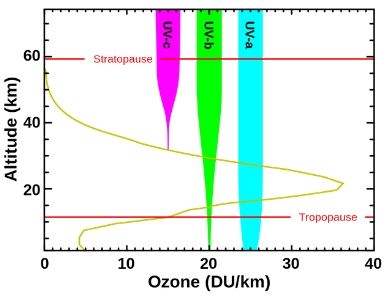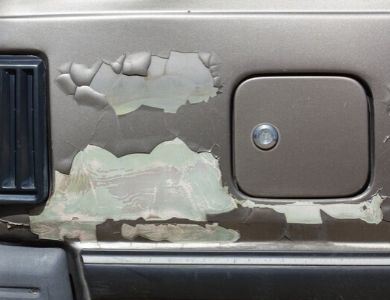
Claims are being made from HEPA filtration equipment manufacturers offering UV light as an additional filter method to kill the COVID-19 virus but in some cases may have an opposite effect.
If you research this subject in-depth, you’ll find many studies just like this one performed at Berkeley Lab, questioning the overall efficacy.

TL;DR: UV light used inside HEPA Air Filtration devices has more disadvantages than benefits, and may be potentially dangerous.
From the 2021 OSAP Virtual Conference panel discussion, “Clearing the Air: Understanding Airborne Transmission of SARS-CoV-2, Air Quality and Viable Control Methods for Dental Offices” (June 3, 2021):
Why is UV not recommended inside a HEPA air cleaner?
What are the current CDC recommendations for UVGI in HEPA air filtration devices?
In the 2003 CDC Guidelines for Environmental Infection Control in Health-Care Facilities (updated July 19, 2019), there are two primary recommendations for using UV light or ultraviolet germicidal irradiation (UVGI).
Upper Room UVGI Fixtures
This method uses reverse lighting fixtures on the ceiling to irradiate the air at or near the ceiling. The fixtures are reversed to prevent exposure to the UVC light from people below.
The major limitation with this design is the limited airflow to the proximity of the fixture. Generally, there is a lack of significant airflow to ensure adequate amounts of air volume is affected. Optimal setup for this type of system can be costly as multiple fixtures and design considerations are required.
UVGI Lamps In HVAC Ducts
The prominent method used in healthcare facilities installs UVGI lamps in HVAC exhaust or supply ducts. It’s very effective with nearly 100% of the air being irradiated. The major drawback with this system is the maintenance and repair since HVAC ducting is typically installed in hard to reach locations making it costly to maintain.
The use of UVGI inside HEPA filtration systems is not recommended by the CDC. (Source)
Rather than a single UVGI + HEPA device, the CDC suggests using HEPA air filtration in conjunction with UVGI equipment and specifically state, “Ultraviolet germicidal irradiation (UVGI) can be used as an adjunct air-cleaning measure, but it cannot replace HEPA filtration”. (CDC “Guidelines”, Pg.27)
UV light is currently NOT recommended for use inside HEPA air purifiers.
Additionally, the national organization for indoor air quality, ASHRAE, recently issued an update to their 62.1 standard prohibiting the use of air-cleaning devices that generate ozone.
Since some UV light bulbs can potentially emit ozone, these types of air purifiers should not be used in lieu of safety in legal concerns.
The ASHRAE update can be viewed here.
Does UV light kill viruses when used inside HEPA filtration units?
Research published in the US National Library of Medicine National Institutues of Health found that the use of UVGI inside HEPA filtration devices was “inconclusive” and that, ” Given the uncertainty of the estimate of benefits, an in-room air cleaner with HEPA technology only may be an equally reasonable alternative to using one with combined UVGI and HEPA technology“.
It’s important to note that testing the efficacy of a HEPA filtration device is the only true way to verify if the UVGI works. There aren’t many studies that prove the effectiveness and just because UVC light is proven to kill viruses does not mean it works in all applications. This is due to the large number of variables involved in the UVGI process.
Less trustworthy HEPA filtration device manufacturers use a common bait and switch tactic whereby they claim the benefits of added UV light in the filtration system by citing pre-existing UV studies but omit the fact that these tests were done in HVAC ducting system or other clinical settings as opposed to on their devices.
This is why it’s important to request actual testing from the device manufacturer to verify UVGI claims.
What type of UV light kills viruses like COVID 19?

First of all, make sure actual UV-C light is being used and not UVA or UVB.
A study performed on SARS—a close relative of COVID-19, found that exposure to UV-A light had no effect after 15 minutes.
Even if UV-C light is being used there are limits to its germicidal capabilities.
Studies performed by the American Journal of Infection Control which used UV-C light to kill viruses within filtration materials (in this case N95 face masks), have shown limited effect. This was due to the inability of UV light to penetrate multiple layers of filtration material.
Similarly, if you were to use UVC on a much denser and complicated surface, such as a HEPA filter, the light would be incapable of penetrating the fibrous pleats.
Microbes must have direct exposure to the UV light in order for it to kill them and something as dense as a HEPA filter makes it impossible to ensure total visibility.
Even if you’re using the UVC light in a chamber before or after the HEPA filter, the dosage, distance, intensity, and duration of exposure are extremely important.

UV dosage and intensity requirements for COVID-19 and other viruses.
In lieu of adequate testing, you may be able to use UV specifications to make a general determination if the UVGI used in the device is even capable of killing COVID-19.
UV dosage amounts decrease significantly by approximately the square of the distance from the source light. So, where dosage is “x” at the light source, 2” away would be x/4 and 8” away would be x/64.(source)
UV intensity also varies based on how the bulb is manufactured. Some bulbs use a coating that lowers the actual amount of UVC being emitted. The UV intensity amount required to kill most bacteria and viruses is 2,000 to 8,000 μW·s/cm2. Covid-19 has been shown to be susceptible to UV light at a dose of 600 μJ/cm2 (for reference, Influenza A requires 1935 μJ/cm2).
Poor quality UV light manufacturers do not produce the required dosage so it is highly recommended to validate this with the device manufacturer.
What are the major drawbacks and potential hazards of using UV-C inside a HEPA filtration device?
We’ve talked a lot about the different means in which UVGI is effective but the results can change and be potentially hazardous when used inside a HEPA filtration device.
UV-C Bulbs Often Contain Mercury
According to the International UltraViolet Association, “Most UV lamps used for UV disinfection contain mercury”. UV-C bulbs can produce ozone (O3) as it interacts with the air and has been proven to be dangerous.
Ultraviolet (UV) light is one form of electromagnetic energy produced naturally by the sun. UV is a spectrum of light just below the visible light and it is split into four distinct spectral areas – Vacuum UV or UVV (100 to 200 nm), UVC (200 to 280 nm), UVB (280 to 315 nm) and UVA (315 to 400 nm).
Thankfully, most UV-C bulb manufacturers use a special coating to prevent this however, cheaply made bulbs or unregulated companies in foreign countries could be supplying a potentially dangerous product if not FDA approved.
No Regulatory Body Approves or Recommends the Use of UVGI Inside HEPA Filtration Devices
HEPA filtration devices have been around for a long time. There is a reason the CDC, EPA, and other agencies still have no recommendation for using UVGI inside HEPA filtration devices.
It’s most likely due to a lack of peer-reviewed research and relevant results.
In fact, the EPA itself states that, “There is no standard measurement for the effectiveness of UVGI cleaners.”

Due to potential danger to consumers, the EPA even performed a detailed study about the use of ozone for indoor air quality: Ozone Generators that are Sold as Air Cleaners
UVC Is Extremely Damaging To All Sorts Of Matter.
UVC is extremely damaging to humans but most filtration units will likely have the light sealed inside so that it’s not visible. UVGI acts by using a photochemical attack which is capable of disintegrating materials such as cotton fibers, plastics, gaskets and types of metal—pretty much all the internal components used to make a HEPA filtration system.
Essentially, you’ll be destroying the device from the inside out and putting excessive damage on exposed filters which may in turn affect the overall filtration capabilities of the device.
If the device is proactively protected by way of design, you’re surely paying a hefty price for it as that would require a higher amount of effort (and cost) to “UV Proof” the internals of such a machine.
At Its Best, UVGI Offers Minimal Benefits When Used Inside a HEPA Filtration Unit
If we assume the device UVGI was adequately tested, had proper FDA approval, used the proper dosage, and was internally protected, it’s still working alongside a HEPA filter— which is already enough to capture airborne contaminants. (See our article on why HEPA is enough to capture COVID-19)
HEPA filters are designed to capture microbes such as bacteria and viruses and are recommended for viral capture by the CDC.
When you attempt to combine both within the same device, you’re essentially trying to cut a piece of bread with a chainsaw instead of a knife.
Pair all of that with the additional maintenance costs and potential hazards that go along with using UVC and it’s simply not worth any added benefit.
UVGI is best used in settings that can integrate it into the HVAC system—for more general usage, you’re better off with standard HEPA filtration.
Watch a cool video about HEPA Air Purifiers here.
For HEPA equipment and information visit our Air Filtration Page.
References linked throughout the article.



[…] Be Careful of using units which also have UV light inside as an additional form of filtration as they may be more trouble than what they’re worth—check out our article on whether UV light helps with HEPA filtration devices or not. […]
[…] You can find more on this in our article about whether UV light is helpful when used in HEPA filtration devices. […]
[…] https://www.vaniman.com/does-uv-light-help-hepa-filtration/ […]